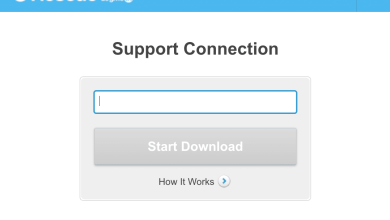Taxi App Developmen Extensive Guide

Thinking of building an on-demand taxi booking app? Today, Saas applications are the hottest business models. And it’s no surprise that you’d want to design an application for your taxi business. After seeing Uber’s success, many entrepreneurs are turning to the taxi booking app development market.
According to a report, the global taxi market was valued at $69.18 billion in 2019 and is projected to reach $120.89 billion by 2027, registering a CAGR of 12.3% from 2020 to 2027. Software as a Service (SaaS) will continue to be the largest market sector, according to Gartner.
So, if you are interested in developing an Uber-like taxi app, but don’t know how to start, then this article is a must-read for you.
Taxi App Solutions in 2022
- Carpooling app
- Car rental service
- Bus booking
- Shuttle service app
- Trucking & logistic solutions
- Bike sharing
- On-demand delivery app
- Employee transportation app
Taxi App Development Process
Identify your Goals
First and foremost, determine what kind of taxi booking app you want to provide to the market. Taxi app development might include not only the creation of an Uber-like application and the associated app development services but also the creation of transportation services. You can choose any taxi app service tailored to your business needs.
Conduct Market Research
The second step is to learn about the market’s ups and downs, as well as the challenges that people encounter. Try to alleviate the troubles with your taxi app solution. This will draw users to your platform and quickly make it popular. Understand the regions where you will discover your target audience. For example, China and the United States are the leading providers of on-demand taxi services. Similarly, you must identify the best ride-sharing market for your on-demand taxi booking service.
Business Model
Creating a perfect business model is essential for the success of taxi app development services. You can either replicate the business model of some of the most popular taxi app development in your sector or create your own.
Create a business model to determine the full scope of work for your fully-featured product. It includes information on your customers, value proposition, revenue, resources, activities, and so on. With a business model, you can understand the entire flow and each component of your online taxi business.
Choose the Right Taxi Booking App Development Company
Creating a perfect business model is essential for the success of taxi app development services. You can either replicate the business model of some of the most popular taxi app development in your sector or create your own.
Create a business model to determine the full scope of work for your fully-featured product. It includes information on your customers, value proposition, revenue, resources, activities, and so on. With a business model, you can understand the entire flow and each component of your online taxi business.
Consider Hybrid Development
The most popular operating systems are iOS and Android. Both require taxi applications for their users. Developing a ride-hailing application is an expensive endeavour in and of itself, and native development may not be the best solution. Consider hybrid development if you want to cut development costs.
In summary, native development necessitates the creation of two separate iOS and Android applications. It means you’re going through the development process twice. It nearly doubles the cost of coding, design, and maintenance.
The program may be launched on both platforms using 80% of the same code thanks to hybrid development. Aside from cost reductions, you will obtain the finished product sooner.
Features and Tech Stack
To begin, developing a native app is the preferred strategy in taxi app development. This enables the development of a bespoke app for each operating system, ensuring improved performance, speed, security, and access to built-in smartphone capabilities such as geolocation and mapping.
A typical taxi app solution is made up of three independent but interrelated parts: a driver app, a passenger app, and an admin panel for company operations administration.
The following are the primary features involved in taxi app development:
Passenger App
- Registration
- Taxi Booking
- Taxi Cancellation
- Driver Tracking
- Payment
- Push Notifications
- Live Chat
- Ratings & Reviews
- Travel History
Driver App
- Driver Profile & Rating
- Trip Alert
- Trip Accept & Cancelation
- Push Notifications
- Navigation & Route Optimization
- Delivery Report
- Messaging
- Payment
Admin Panel
- Secure Login
- Driver and Passenger Management
- Vehicle Management
- Check Ratings & Reviews
- Notification Management
- Booking Management
- Location and Fare Management
- Driver and User Support
How to build a taxi app and what does it cost?
Discovery Phase
Though it may not appear so, the discovery step is just as crucial as the others. Some people believe it is not worthwhile to invest in, but it ultimately saves many lives.
During the discovery phase, a customer and a service provider collaborate to define specific standards and form an understanding of a future app. At this time, active team members include business analysts, a project manager, a product owner, and designers. The designers’ aim during the discovery stage is to depict what other team members explain verbally, and during the development stage, they do the whole cab booking app design. They create diagrams, charts, wireframes, and mockups.
A Software Requirement Specification document is created by a taxi app development company. It covers all information regarding the forthcoming app, down to the smallest minutiae. Specialists begin filling it out on the initial visit with a customer.
Both parties have a comprehensive knowledge of the application logic at the end of the pre-development stage. The SRS document describes it in detail and is complemented by wireframes, mockups, and other materials.
Development Stage
This is most likely the most difficult step. While coding, programmers consult the SRS document, which contains all of the software requirements. QA engineers test the app on a regular basis to ensure that everything functions properly.
Different SDLC models are used by taxi app development companies. SDLC is an abbreviation for software development life cycle. An SDLC model specifies the processes that specialists must do in order to produce the desired outcome as a final product. The stages are mostly the same. They are as follows:
- Gathering and analyzing requirements
- Design
- Development
- Testing
- Deployment
- Maintenance
Support and Maintenance
This level necessitates the least amount of consumer participation. During the support, maintenance, and upgrades period, the service provider’s team is in charge of everything. It begins immediately after the product is released and continues for years afterwards. Specialists update a taxi app in a systematic manner, fixing bugs as they arise and making improvements.
Taxi Booking App Development Cost
Now for the big question: how much does it cost to design a taxi app?
As you can see from what you’ve read thus far, the cost of developing a taxi booking app is determined by a variety of factors. You’ve probably figured out how it changes depending on the business strategy and the features necessary.
The location is another major aspect that influences app development costs. The cost of development will vary depending on the region you select.
- The cost of development in the United States ranges between $150 and $250 per hour.
- The developer fee in Eastern Europe is between $40 and $150 per hour.
- In India, the developer pay ranges between $10 and $80 per hour.
A taxi booking app with minimal functionality will typically cost between $40,000 and $50,000 to design. When geographical and other associated factors are considered, the cost is liable to fluctuate.
Final Words
The taxi booking app sector is more cutthroat than startup-friendly. Nothing is impossible if you have a distinctive value proposition, a solid project vision, and a trustworthy app development business.
You can hire a professional taxi booking app development agency to build a feature-rich taxi app based on your value proposition and business goals.
Despite being a privately held company, your taxi app solution must adhere to local government rules. Consider advice from your local transportation organization and suggestions for user data, privacy policy, and security if you are preparing to launch an app that provides public taxi services.




![Photo of Pengunduh Video TikTok Online Terbaik [Dengan/Tanpa Tanda Air]](https://articlewine.com/wp-content/uploads/2022/05/tiktok-ga7b4bbf0f_1920-390x220.jpg)

